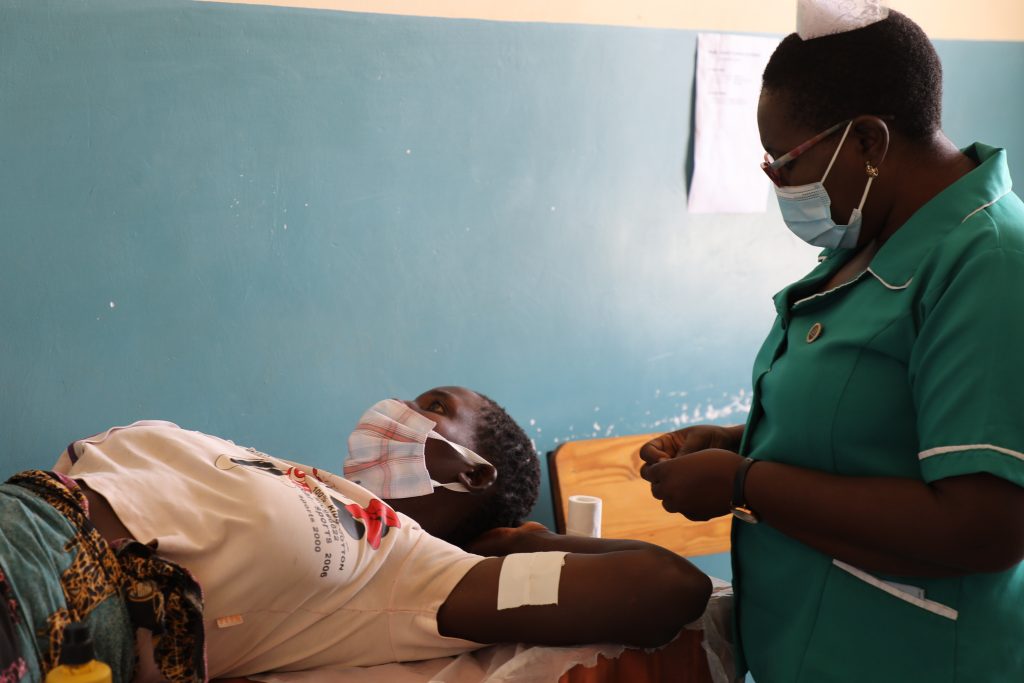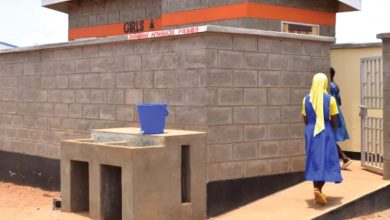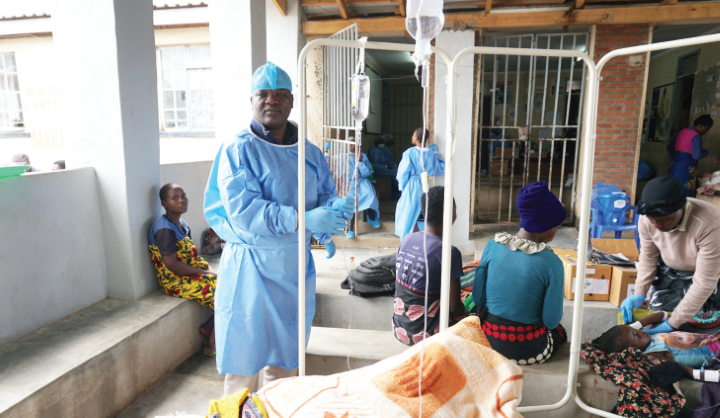From frying pan into fire as health inequalities worsen
On February 20 2017, 30-year-old Chrissy Phiri delivered her sixth born daughter in a bush at midnight on her way to the Kasungu district hospital.
She defied reality as she unilaterally underwent a baby delivery process in the middle of nowhere, while a hired young kabaza boy (bicycle peddler) waited for her at a stone-throw away distance.

She bore a baby boy but today she cannot afford to imagine the excruciating pain she went through the, she laments. The boy is five years now and is doing standard one at one of the remotest Primary Schools in Traditional Authority Wimbe in Kasungu.
Her narration to this report was emotional as tears snaked down her cheeks. She wonders why the government, through Kasungu Municipality and the district health office, is still not paying attention to the health challenges in the area.
“Nurses advise us to go and wait at the district hospital during the last trimester, but it’s impossible for most of us working on estates. Our supervisors don’t allow that. The only solution is to have a maternity facility nearby,” she bemoaned.
Phiri’s ordeal is a replica of a version shared by Dorica Zuze, from Disenti village in Nsanje.She is a mother of five.
The 35-year-old farmer worries that due to the emergence of Covid-19 pandemic, family planning services from hear nearby health center have been heavily compromised. She says if she had enough money, she could have resorted to visiting private clinics but her limited income does not allow such a “luxury.”
Her fears were justified. She is in fact vindicated. Recent research by United Nations Population Fund (UNFPA) shows that many governments across the world, including Malawi, are diverting funds meant for sexual reproductive health (SRH) and family planning to the Covid-19 fight.
Glaring health inequalities exposed
Apart from physically visiting several health centers and other public hospitals in both north and southern region of the country, as part of the project, this reporter also randomly appreciated the views and welfare of rural dweller to share their experiences in the access to healthcare in the country.
The crescendo of the project involved uncovering ‘virgin’ and fresh research findings from the University of Malawi and these yet-to-be published findings which the reporter is privy to, are set to be published in the coveted Oxford Journal of Public Health.
The research work is titled “An evolution of socioeconomic inequality in health care access in Malawi.”
The journal is a quarterly peer-reviewed public health journal which was originally established in 1892 as the Journal of State Medicine by the Royal Institute of Public Health and has undergone several renames during its history.
The research work, authored by health economist Gowokani Chijere-Chirwa, used from three rounds of the nationally-representative Integrated Household Surveys (IHS) of 2005, 2010 and 2016.Chijere-Chirwa teaches economics at the University of Malawi in Zomba.
Chijere-Chirwa confirmed in a telephone interview that he authored the research work about glaring health inequalities.He later provided consent to publish its findings.
Just like what the reporter found out from his own sanctioned project, Chijere-Chirwa’s research results suggest that despite the various policies that have been implemented between 2005 and 2016 to improve health care access and general inequality, there has been an increase in the socioeconomic related inequality in healthcare access in Malawi.
In an interview to dissect his findings, Chijere-Chirwa said: “These findings mean that universal health coverage may not be achieved as many people are already being left behind due to a lack of access to health care.
“Therefore, there is a need for policies such as intensifying mobile clinics, health cards for the less privileged to address the factors that contribute to this disparity in health care access.”
As it stands, Malawi, just like many other countries are at the height of moving towards the attainment of Sustainable Development Goals (SDGs).
Good health for all, access to adequate and quality services are at the pinnacle of SDGs.
The SDGs provide time-framed targets in key sectors—including health, education, employment, energy, infrastructure, and the environment—for all nations including Malawi to achieve.
The 17 SDGs, agreed upon in 2015 by world leaders, are designed to create a better, fairer, world by 2030 – ending poverty, urgently addressing climate change and ending inequality.
According to a health expert Filipo Kagwamnjira, the importance of having adequate and quality services has been reflected in the SDGs goal 3, which stipulates that no one should be left behind in the pursuit of good health care.
This has been incorporated in the recent Malawi National Health Policy of 2017 and the National
Health Sector Strategic Plan for 2017-2022 and these two local blueprints have been phrased in line with the SDGs and the African Agenda 2063.
The need for good health care access to women such as Phiri and Zuze stems from the fact that health care access remains a challenge in Malawi.
Kagwamnjira explaines that this is so because some people live in the hard-to-reach places in the rural areas and estimates that 84 percent of the 18.6 million Malawians still live in rural areas.
The difficulties arise because of long distances that are more than five kilometres from the nearest health facility and other physical barriers such as impassable rivers and mountains, he says.
Corroborating the reporter’s findings, researcher Chijere-Chirwa also discovers that sometimes health personnel in Malawi are reluctant to live in remote areas as they prefer urban zones hence perpetuating the socioeconomic inequality in access to healthcare.
And such a skewed distribution of health personnel, according to our findings has a negative multiplier effects on other key factors of production hence affecting the domestic economy at large.
For example, it is revealed that the presence of socioeconomic inequalities in health care may mean that Malawi might have poor labour, in turn affecting economic development since labour is the fundamental factor of production
Currently, Malawi’s health landscape accounts for 60 percent of service provision and the health system uses a decentralised healthcare system, with four levels linked together by a referral system.
The four levels are community, primary, secondary and tertiary.
However, given the difference in the spatial distribution of facilities, health posts, dispensaries, village clinics, mobile clinics and health surveillance assistances (HSAs) are used to provide health care at the community level.
But HSAs are responsible for a population of 1000 individuals in their area. Health centres and community hospitals, which are even larger than the former, are used to provide primary-level services.
In total, 28 district hospitals exist at the secondary level, whereas four central hospitals exist at the tertiary level.
Abuja Declaration ignored
Health underfunding is perpetuating health inequalities in Malawi, findings also reveal.Over the years, funding towards health has not helped matters either.If at all, underfunding has culminated into worsening health inequalities among Malawians.It has emerged from findings of this reporter which has also been collaborated by Chijere-Chirwa’s research and also several other available local literature which the reporter has read.
In April 2001, heads of state of African Union countries including Malawi met and pledged to set a target of allocating at least 15 percent of their annual budget to improve the health sector.
This commitment is referred to as the ‘Abuja Declaration’ and African governments usually reference this declaration in health sector goals and policy documents.
The Abuja declaration became a critical rallying call to mobilize more resources from government coffers for the health sector, whose funding in Malawi has been very sporadic and in most cases insufficient.
Findings reveal that achieving improved health in Malawi is a costly endeavor as Malawi has a very limited fiscal space, perpetually though.
The continuous underfunding of the health sector is despite Capital Hill proclaiming publicly, year in and year out, that the health sector is very critical in Malawi’s development as it falls under Enabler number five (Human Capital Development) in the Malawi 2063 document, which is Malawi’s second long-term national development masterplan after the fiasco called Vision 2020.
For example, the health sector, allocated 9.3 percent of the 2020/21 national budget, and the sector then ranked third in terms of national spending priority after education (18%) and agriculture (16%) and not counting debt servicing (17%).
Health sector allocations averaged 9.3% of the total budget over the period 2018/19-2020/21, after peaking at 10.6% in 2016/17.
This,therefore, means that Malawi has consistently been missing the Abuja Declaration target for African States to allocate 15% of their total budgets to the health sector.
In relation to GDP, health sector budgets have averaged 2.7% over the past five years, compared to 3.2% in 2016/17, according to a 2020/21 health budget brief prepared by Unicef.
In the 2022/23 National Budget which is worth K2.84 trillion, government has allocated K283.57 billion to the health sector and this represents 10 percent of total budget, still falling short of the 15 percent desired Abuja declaration by five percentage points.
“This inadequate budget allocation may have resulted in shortages of medical supply and human resource resources in public facilities, where less privileged people receive health care,” said Chijere-Chirwa.
Kenyani-based Nkechi olalere, who chairs the Rapid Cycle Monitoring sub-group of World Bank’s Global Financing Facility Results Advisory Group and has massively published research on African Union’s 2001 Abuja Declaration with respect to funding national health budgets observed that development assistance for health has crowded out government resources and has created donor dependence in Malawi and many other Africa countries.
“Even though Africa has had better economic growth in the recent past as compared to other regions, when African countries become richer, government spending on health does not automatically increase. Between 2001 and 2015, for example, government spending on health, as a proportion of its overall spending, decreased in 21 African countries. This is likely to worsen with the COVID-19 pandemic,” she explains.





